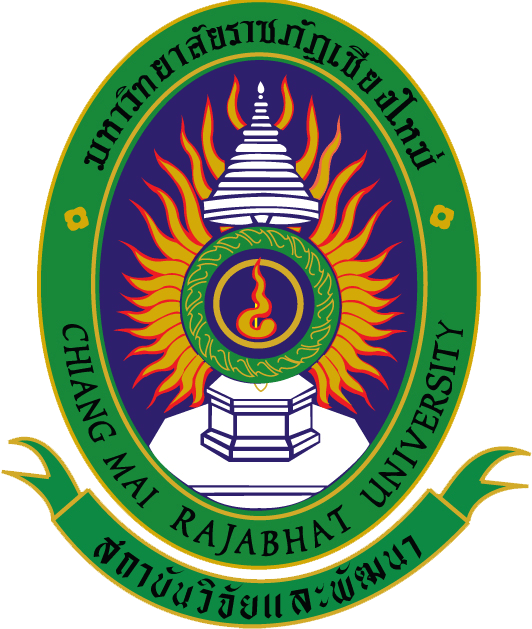
ระบบสารสนเทศงานวิจัย สถาบันวิจัยและพัฒนา มหาวิทยาลัยราชภัฏเชียงใหม่
Research Information System(RIS)
การสร้างสรรค์สวนดอกไม้ในหุบเขาเพื่อการท่องเที่ยวและการพัฒนาอย่างยั่งยืน
ผู้ช่วยศาสตราจารย์ชูสิทธิ์ ชูชาติ
บัณฑิตวิทยาลัย
คำสำคัญ :
เลขทะเบียน :
1596-65-grad-TSRI
บทคัดย่อ
งานวิจัยเรื่องการสร้างสรรค์สวนดอกไม้ในหุบเขาเพื่อการท่องเที่ยวและการพัฒนาอย่างยั่งยืน มีวัตถุประสงค์ เพื่อสร้างแหล่งท่องเที่ยวสวนดอกไม้ในหุบเขาควบคู่กับกิจกรรมการท่องเที่ยว ในสวนดอกไม้เพื่อฟื้นฟู ส่งเสริม กระตุ้นเศรษฐกิจชาวบ้าน และเพื่อส่งเสริมการปลูกไม้ยืนต้นควบคู่ กับสวนดอกไม้ และพืชเศรษฐกิจเพื่อให้เกิดการพัฒนาที่ยั่งยืน พื้นที่วิจัยในเขตลุ่มน้าวางตอนบนประกอบด้วย บ้านขุนวาง บ้านแม่เตียน บ้านโป่งสมิต บ้านห้วยอีค่าง พื้นที่ความสูงตั้งแต่ 1,000 เมตรถึง 1,600 เมตรเหนือระดับน้าทะเลปานกลาง ใช้วิธีการวิจัยเชิงคุณภาพ และการวิจัยเชิงปฏิบัติการ
ผลการวิจัยพบว่า การสร้างสวนดอกไม้ในหมู่บ้านขุนวาง ควรสร้างสวนนางพญาเสือโคร่งควบคู่กับการปลูกผัก ผลไม้ ดอกไม้เมืองหนาว และการท่องเที่ยว สาหรับบ้านแม่เตียน บ้านโป่งสมิต บ้านห้วยอีค่าง ควรสร้างสวนดอกไม้ควบคู่กับการทานา ปลูกผัก ผลไม้ และดอกไม้เมืองหนาว กิจกรรมดังกล่าวแล้ว ก่อให้เกิดรายได้ตลอดปี ปริมาณสินค้าพอดีกับความต้องการซื้อ และระบบนิเวศ ในเขตหุบเขาสามารถรองรับได้ ช่วยให้เกิดการอนุรักษ์สิ่งแวดล้อม และเศรษฐกิจหมุนเวียนสอดคล้อง กับการพัฒนาอย่างยั่งยืน
ชาวบ้านขุนวางมีรายได้จากสวนนางพญาเสือโคร่งปีละ 780,000 - 800,000 บาท (พ.ศ. 2559 - 2560) และลดน้อยลงเพราะโควิด 19 เหลือเพียงปีละ 190,000 - 200,000 บาท (พ.ศ. 2564 – 2565) นอกจากนี้ยังมีรายได้จากการขายของที่ระลึกผักผลไม้ และการฝากรถปีละ 4,000,000 บาท ต่อหมู่บ้าน
สาหรับบ้านแม่เตียน บ้านโป่งสมิต บ้านห้วยอีค่าง ชาวบ้านมีรายได้จากการขายดอกไม้ปีละ 45,000 - 75,000 บาท และรายได้จากการปลูกผักปีละ 52,000 - 60,000 บาท ต่อครอบครัว ชาวบ้านไม่ต้องการปลูกดอกไม้แปลงใหญ่ เพราะจะทาให้สินค้าล้นตลาด ชาวบ้านจึงเลี้ยงสัตว์ปลูกผักผลไม้ ดอกไม้ ปลูกข้าว และจัดการท่องเที่ยวอย่างยั่งยืนควบคู่กันไปตลอดปี สาหรับบ้านขุนวาง ซึ่งมีสวนนางพญาเสือโคร่งอาจปลูกข้าวน้อยลง แต่ชาวบ้านปลูกผัก ผลไม้ ดอกไม้ และเลี้ยงสัตว์ ควบคู่กันไปเพื่อให้มีรายได้ตลอดปี
Abstract
The purpose of the research entitled “Creative Flower Garden in the high Valley for Tourism and Sustainability” is to develop the flora garden-based tourism sites and activities in the high valley region for reviving, supporting, and encouraging the local economies of the involved communities as well as for promoting the perennial plant coupled with flower garden and cash crop for sustainable development. The focused areas of this research are Ban Khun Wang, Ban Mae Tien, Ban Pong Samit, and Ban Huay E-Kang, which have elevations between 1000 and 1600 meters above mean sea level. Additionally, qualitative research and action research were employed in this study.
The results from this research indicated that for Ban Khun Wang, a Wild Himalayan Cherry (Prunus cerasoides) garden should be planted with vegetables, fruits, and winter flower gardens. Tourism should also be developed. However, flower gardens should be cultivated coupled with rice farming as well as vegetables, fruist, and winter flower gardens for Ban Mae Tien, Ban Pong Samit, and Ban Huay E-Kang. The mentioned activities could generate annual incomes, balance demand, and supply, and be appropriate for the valley’s ecosystems leading to environmental conservation and a circular economy harmonizing with sustainable development.
The villagers of Ban Khun Wang had an income from Wild Himalayan Cherry gardens of 780,000 - 800,000 baht (2016-2017). However, because of the COVID-19 pandemic, the annual income significantly decreased to 190,000 - 200,000 baht (2021- 2022). In addition, the villagers also had an income from selling souvenirs, vegetables, and fruits and from renting vehicle parking lots.
For the villagers of Ban Mae Tien, Ban Pong Samit, and Ban Huay E-Kang, the annual family incomes of 45,000 - 75,000 baht and 52,000 - 60,000 baht came from selling flowers, and vegetables, respectively. Therefore, they didn’t target the extensive plot of flower gardens which could cause an oversupply in the market. Then, the villagers farmed livestock, cultivated vegetables, fruits, flowers, and rice along with sustainable tourism for an entired year. However, the villagers of Ban Khun Wang tended to have less rice fields because they had a Wild Himalayan Cherry Garden. However, they still planted vegetables, fruits, and flowers and raised animals to maintain their annual incomes.
ไฟล์งานวิจัย
ไฟล์รวมเล่มการสร้างสรรค์สวนดอกไม้ฯ.pdf
ข้อมูลการนำไปใช้ประโยชน์
15 19 ส.ค. 2565
สำนักงานคณะกรรมการส่งเสริมวิทยาศาสตร์ วิจัยและนวัตกรรม (สกสว.)
สำนักงานคณะกรรมการส่งเสริมวิทยาศาสตร์ วิจัยและนวัตกรรม (สกสว.) ชั้น 14 อาคาร เอส เอ็ม ทาวเวอร์ 979/17-21 ถนนพหลโยธิน แขวงสามเสนใน เขตพญาไท กรุงเทพฯ 10400
02 278 8200
callcenter@trf.or.th, webmaster@trf.or.th